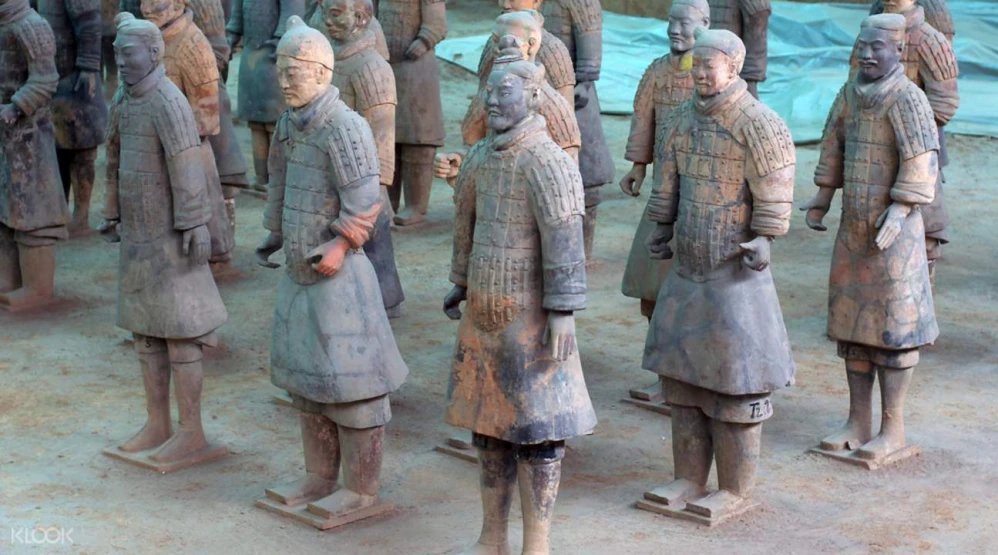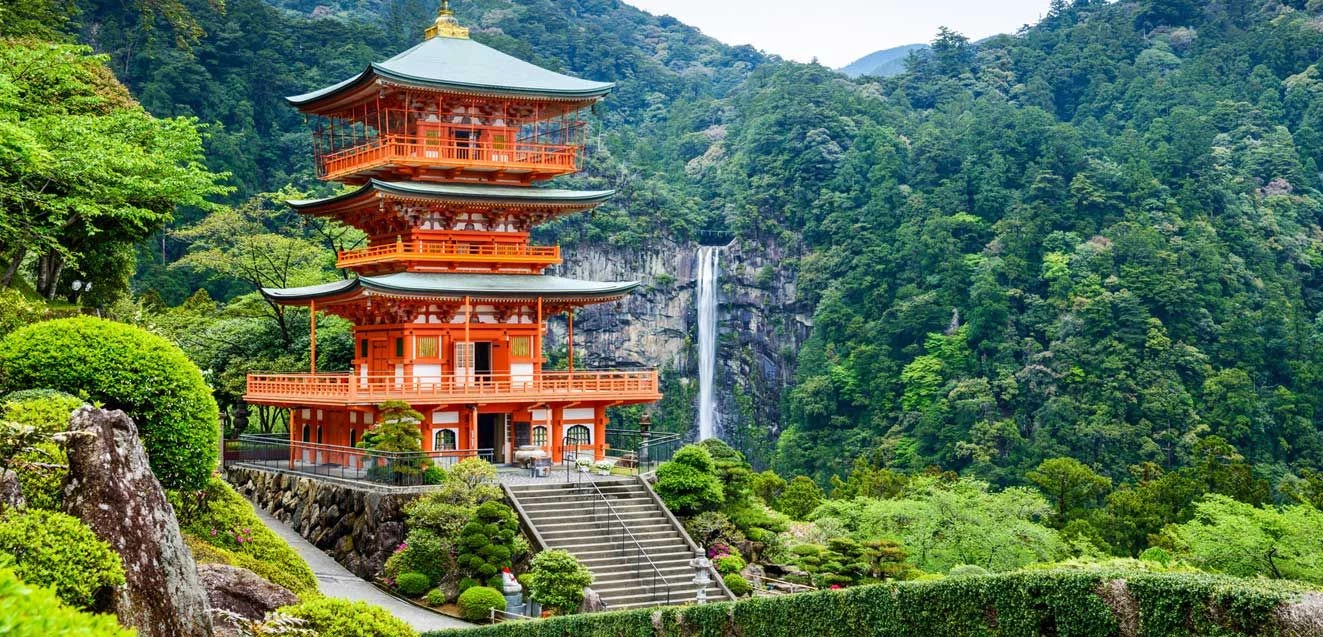
Japan
Region map
General information
The “Land of the Rising Sun” is a country where the past meets the future. Japanese culture stretches back millennia, yet has also been quick to adopt and create the latest modern fashions and trends.
Japan is often difficult to understand for those educated in the west. Japan has beautiful temples and gardens which are often surrounded by garish signs and ugly buildings. The most acclaimed restaurant in the country, which costs hundreds of dollars for dinner, is a small shop located in a subway station seating less than a dozen people. In the middle of modern skyscrapers you’ll discover sliding wooden doors which lead to traditional chambers with tatami mats, shoji screens, and calligraphy, suitable for traditional tea ceremonies. These juxtapositions can seem perplexing or jarring to those used to the more uniform nature of European and North American cities, but if you let go, and accept the layered aesthetics, you’ll find interesting and surprising places throughout the country. Let's discover Japan with Adventure Asia!
Japan itineraries
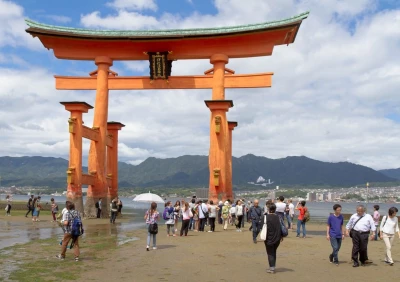
Hiroshima And Shimanami Kaido
Shimanami Kaido is one of the most famous cycling routes in Japan, starting at Onomichi city in Hiroshima Prefecture and ending at the Imabari city in Ehime prefecture. The route takes you cycling through six islands, offering unparalleled views of the Seto inland sea. You have the opportunity to take a detour on one of the six islands, explore a little and stay overnight in a quaint and friendly local family-run accommodation. Traverse islands on roads and bridges built just for cycling. Relax at a historical seaside Onsen. Watch the sun descend behind the mountains in the distance. Experience the Shimanami Kaido, a bright blue path of bike lanes and bridges built across the islands of The Setouchi Sea. Explore the mountains of Ehime and the famous shrine in the water at Miyajima. Enjoy exquisite meals prepared just for you. We cannot wait for you to soak in the beauty of this often unexplored region.
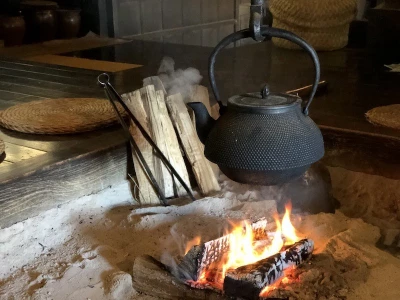
Wildlife and Mysterious Landcapes in Eastern Hokkaido
On this tour, guests travel from Kushiro to Hokkaido’s eastern pacific coast to the Shiretoko Peninsula, stretching out into the Sea of Okhotsk. Throughout the tour, you will see untouched nature, visit UNESCO wetland nature reserves, experience the spectacular landscapes formed by volcanoes, and enjoy the flora and fauna, especially to Hokkaido. This tour features relaxing Onsen hot springs after each day’s walk and wonderful regional cuisine is known to be some of the freshest in Japan, along with the opportunity to learn the history of Hokkaido’s indigenous peoples, the Ainu. You are sure to be surprised by how much nature has to offer, each location taking you one step deeper into the true nature of eastern Hokkaido.

Eastern Hokkaido in 5 Days
If you’ve already explored the bustling streets of Tokyo, wolfed down bowls of ramen in Osaka, and are still craving a wholly different experience of Japan, traverse to its northern island of Hokkaido. Here, you’ll be greeted with a taste of the country unlike you’ve known. The island boasts six breathtaking national parks filled with primeval forests, mountains and volcanoes, Onsens, a fascinating Ainu indigenous culture, swathes of wildlife and possibly the world’s clearest and most beautiful lakes. For those who love the cold, snowy Hokkaido boasts of an insatiable array of winter activities you can try, including skiing on the world’s best ski slopes in Furano and celebrating its famous winter festivals. But if summer travels are your thing, the island forms into a postcard-perfect landscape of the beautiful flower fields, with temperatures mild and pleasant enough for you to do plenty of sightseeing in.
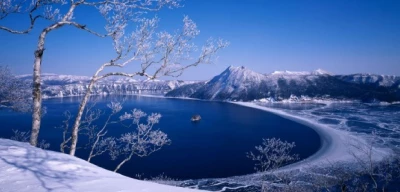
Lake Akan to Shiretoko – Hokkaido Winter
Self-guided exploration of Eastern Hokkaido’s winter landscapes and wildlife Discover the pristine natural landscape of Hokkaido in this 7-day winter itinerary. Japan’s second-largest main island is a paradise for nature lovers and bird watchers, with snow-capped mountain ranges, serene forests and deep crater lakes. Starting in Kushiro on the east coast, you’ll travel north, heading into the winter wilderness of the Akan-Mashu National Park. Visit UNESCO World Heritage nature reserves, experience spectacular snow-covered landscapes and spot rare wildlife unique to Hokkaido before ending your adventure on the unique Shiretoko Peninsula.
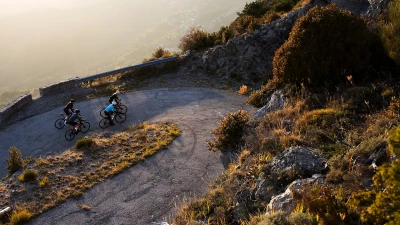
Cycling Lake Biwa, Kyoto
Enjoy a day off in the ultimate tranquility of the countryside as you take a leisurely cycle along the shores of Lake Biwa, the largest in Japan. Using electric bikes that provide an effortless, refreshing ride, this course follows beautiful lakeside roads up to stunning scenes of step rice terraces. This is a slow-paced, off-the-beaten-path tour in the countryside, showing a different side of Japan. Visit local shrines and wander along village streets free of the tourist crowds. Have a delightful lunch in the traditional home of a local farming couple. Instructed by the lady of the house, indulge yourself in preparing a delicious lunch (a vegetarian menu is also available) using the freshest local ingredients. We hope you will join us on this tour and its feast of discoveries!

Winter Nakasendo Trail from Kyoto
The winter Nakasendo trail tour is a fully-guided tour suitable for anyone who can walk at a gentle pace for three to four hours in comfort. In general, the route is greatly undulating but it also includes some short, steeper climbs. The lower temperatures of winter include the probability of snow at some points along the route. Time to include both the Western and the Chinese New Year holiday periods, this tour provides modern-day walkers with a comforting taste of Edo Period Japan in winter. We cross several high passes, where encountering snow is likely, but the emphasis is on comfort and each day we find warm welcomes and surroundings in Japanese inns. Here, we can relax on one occasion around an open hearth fire and enjoy the excellent meals of locally sourced produce. Thermal hot spring baths are another feature of the Nakasendo trail. Always a joy and a great way to wind down at the end of any day, these are particularly enticing during the winter months.

Kumano Kodo Links Kyoto Ancient Trail
The ancient pilgrimage to the Three Grand Shrines of Kumano spans as far back as 1,000 years ago and still continues today. The pilgrimage routes that crisscross Kil, Japan’s largest peninsula have become known as the Kumano Kodo Pilgrimage Trail. Pilgrims and tourists, alike, take on the route to reach Kumano Hongu Taisha, Kumano Nachi Taisha, and Kumano Hayatama Taisha. Throughout history, retired emperors, high-ranking officials, and other determined pilgrims have completed the pilgrimage. Today, the Kumano Kodo Pilgrimage Trail is a designated UNESCO World Heritage Site. The route spans through the Kii mountain range, making for an arduous journey. Though challenging, the paths wind through verdant forests and pass by and over cascading waterfalls and streams. In addition to providing a path between the shrines, the Kumano Kodo links Kyoto to the mountainous Kii region.
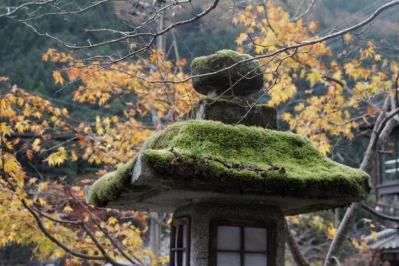
Nakasendo Way: The Kiso Valley from Kyoto
A short small-group guided walking tour with three hikes of 3-6 hours of village-to-village – on the Nakasendo Trail. The Kiso Road is one of the most beautiful sections of the Nakasendo Way, our original tour that has become the classic walking tour in Japan. This short-stay, fully- guided walking tour follows the ancient Nakasendo Way through the Kiso Valley of central Japan and also reaches the high alpine Kaida plateau. Our route takes us into a world far removed from the modern bustle of Japan’s Megacities. We travel through some of the most picturesque and historic villages in the nation, stay in rural family-run Japanese inns and relax in Onsen thermal hot spring baths. Meals are a treat of Japanese cuisine, and because we are deep in the rural mountains of Japan, the ingredients include many locally grown vegetables, morsels foraged in the surrounding mountains and freshwater fish caught in the nearby streams and rivers.
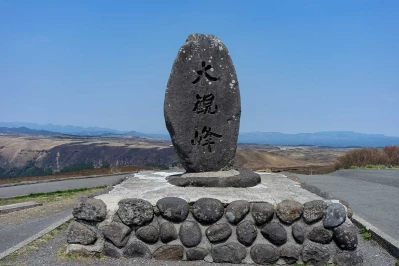
Kyushu, Kyoto: Land Of Fire Tour
You are introducing Japan’s southernmost Island; Kyushu. This part of the country offers a diverse landscape and unrivaled natural beauty in the form of hot springs, volcanoes, forests, mountains, and beaches. On this tour, you will start with sightseeing in Kyoto and experience several authentic Ryokan and Hot springs, the beautiful scenery of Takachiho Gorge, Hells of Unzen, and Mt. Aso, the bustling cities of Fukuoka and Nagaski and cultural activities such as Kimono fitting, tea brewing, and a rickshaw ride.

From Kyoto to Kojima in The Shadow Of Mountains
A Japan small group tour spending twelve days discovering the cities, cultural and coastal highlights of this unique country. Any Japan cultural tour has to include metropolitan and historical greats such as Kyoto, but this holiday also steps off the tourist trail to visit the country’s lesser-known coastal treats such as Kojima and Yunotsu as well, reminding you that Japan is actually a collection of Islands with eclectic, exquisite landscapes, seascapes, and Eco Escapes. Using Japan’s famous railway system, including bullet trains, to travel from one place to the next, staying in traditional Ryokan and Minshuku inns and having plenty of opportunities to literally immerse yourselves in Japan’s cultural highlights, the Onsen or thermal spring baths, the itinerary reveals many layers of Japan’s history too.

Wildlife and Mysterious Landcapes in Eastern Hokkaido
On this tour, guests travel from Kushiro to Hokkaido’s eastern pacific coast to the Shiretoko Peninsula, stretching out into the Sea of Okhotsk. Throughout the tour, you will see untouched nature, visit UNESCO wetland nature reserves, experience the spectacular landscapes formed by volcanoes, and enjoy the flora and fauna, especially to Hokkaido. This tour features relaxing Onsen hot springs after each day’s walk and wonderful regional cuisine is known to be some of the freshest in Japan, along with the opportunity to learn the history of Hokkaido’s indigenous peoples, the Ainu. You are sure to be surprised by how much nature has to offer, each location taking you one step deeper into the true nature of eastern Hokkaido.

Eastern Hokkaido in 5 Days
If you’ve already explored the bustling streets of Tokyo, wolfed down bowls of ramen in Osaka, and are still craving a wholly different experience of Japan, traverse to its northern island of Hokkaido. Here, you’ll be greeted with a taste of the country unlike you’ve known. The island boasts six breathtaking national parks filled with primeval forests, mountains and volcanoes, Onsens, a fascinating Ainu indigenous culture, swathes of wildlife and possibly the world’s clearest and most beautiful lakes. For those who love the cold, snowy Hokkaido boasts of an insatiable array of winter activities you can try, including skiing on the world’s best ski slopes in Furano and celebrating its famous winter festivals. But if summer travels are your thing, the island forms into a postcard-perfect landscape of the beautiful flower fields, with temperatures mild and pleasant enough for you to do plenty of sightseeing in.

Lake Akan to Shiretoko – Hokkaido Winter
Self-guided exploration of Eastern Hokkaido’s winter landscapes and wildlife Discover the pristine natural landscape of Hokkaido in this 7-day winter itinerary. Japan’s second-largest main island is a paradise for nature lovers and bird watchers, with snow-capped mountain ranges, serene forests and deep crater lakes. Starting in Kushiro on the east coast, you’ll travel north, heading into the winter wilderness of the Akan-Mashu National Park. Visit UNESCO World Heritage nature reserves, experience spectacular snow-covered landscapes and spot rare wildlife unique to Hokkaido before ending your adventure on the unique Shiretoko Peninsula.

Cycling Lake Biwa, Kyoto
Enjoy a day off in the ultimate tranquility of the countryside as you take a leisurely cycle along the shores of Lake Biwa, the largest in Japan. Using electric bikes that provide an effortless, refreshing ride, this course follows beautiful lakeside roads up to stunning scenes of step rice terraces. This is a slow-paced, off-the-beaten-path tour in the countryside, showing a different side of Japan. Visit local shrines and wander along village streets free of the tourist crowds. Have a delightful lunch in the traditional home of a local farming couple. Instructed by the lady of the house, indulge yourself in preparing a delicious lunch (a vegetarian menu is also available) using the freshest local ingredients. We hope you will join us on this tour and its feast of discoveries!

Winter Nakasendo Trail from Kyoto
The winter Nakasendo trail tour is a fully-guided tour suitable for anyone who can walk at a gentle pace for three to four hours in comfort. In general, the route is greatly undulating but it also includes some short, steeper climbs. The lower temperatures of winter include the probability of snow at some points along the route. Time to include both the Western and the Chinese New Year holiday periods, this tour provides modern-day walkers with a comforting taste of Edo Period Japan in winter. We cross several high passes, where encountering snow is likely, but the emphasis is on comfort and each day we find warm welcomes and surroundings in Japanese inns. Here, we can relax on one occasion around an open hearth fire and enjoy the excellent meals of locally sourced produce. Thermal hot spring baths are another feature of the Nakasendo trail. Always a joy and a great way to wind down at the end of any day, these are particularly enticing during the winter months.

Kumano Kodo Links Kyoto Ancient Trail
The ancient pilgrimage to the Three Grand Shrines of Kumano spans as far back as 1,000 years ago and still continues today. The pilgrimage routes that crisscross Kil, Japan’s largest peninsula have become known as the Kumano Kodo Pilgrimage Trail. Pilgrims and tourists, alike, take on the route to reach Kumano Hongu Taisha, Kumano Nachi Taisha, and Kumano Hayatama Taisha. Throughout history, retired emperors, high-ranking officials, and other determined pilgrims have completed the pilgrimage. Today, the Kumano Kodo Pilgrimage Trail is a designated UNESCO World Heritage Site. The route spans through the Kii mountain range, making for an arduous journey. Though challenging, the paths wind through verdant forests and pass by and over cascading waterfalls and streams. In addition to providing a path between the shrines, the Kumano Kodo links Kyoto to the mountainous Kii region.

Nakasendo Way: The Kiso Valley from Kyoto
A short small-group guided walking tour with three hikes of 3-6 hours of village-to-village – on the Nakasendo Trail. The Kiso Road is one of the most beautiful sections of the Nakasendo Way, our original tour that has become the classic walking tour in Japan. This short-stay, fully- guided walking tour follows the ancient Nakasendo Way through the Kiso Valley of central Japan and also reaches the high alpine Kaida plateau. Our route takes us into a world far removed from the modern bustle of Japan’s Megacities. We travel through some of the most picturesque and historic villages in the nation, stay in rural family-run Japanese inns and relax in Onsen thermal hot spring baths. Meals are a treat of Japanese cuisine, and because we are deep in the rural mountains of Japan, the ingredients include many locally grown vegetables, morsels foraged in the surrounding mountains and freshwater fish caught in the nearby streams and rivers.

Kyushu, Kyoto: Land Of Fire Tour
You are introducing Japan’s southernmost Island; Kyushu. This part of the country offers a diverse landscape and unrivaled natural beauty in the form of hot springs, volcanoes, forests, mountains, and beaches. On this tour, you will start with sightseeing in Kyoto and experience several authentic Ryokan and Hot springs, the beautiful scenery of Takachiho Gorge, Hells of Unzen, and Mt. Aso, the bustling cities of Fukuoka and Nagaski and cultural activities such as Kimono fitting, tea brewing, and a rickshaw ride.

From Kyoto to Kojima in The Shadow Of Mountains
A Japan small group tour spending twelve days discovering the cities, cultural and coastal highlights of this unique country. Any Japan cultural tour has to include metropolitan and historical greats such as Kyoto, but this holiday also steps off the tourist trail to visit the country’s lesser-known coastal treats such as Kojima and Yunotsu as well, reminding you that Japan is actually a collection of Islands with eclectic, exquisite landscapes, seascapes, and Eco Escapes. Using Japan’s famous railway system, including bullet trains, to travel from one place to the next, staying in traditional Ryokan and Minshuku inns and having plenty of opportunities to literally immerse yourselves in Japan’s cultural highlights, the Onsen or thermal spring baths, the itinerary reveals many layers of Japan’s history too.

Family Adventure Tour Of The Treasures Of Japan’s Heartland
This tour allows children and their parents to discover the unknown side of Japan and to connect with the communities they explore. This 8-day adventure gives a deep insight into the Kansai area, offering exciting vistas of Japan from the urban delights of Kyoto to rural immersion in the communities of Asuka and Sasayama. This family tour draws deeply on Japan’s strong connections with the local communities and the people they know personally. It’s no secret that parents are happy when their kids are happy. They will be overjoyed to watch them learning the spirit and techniques of Wadaiko Japanese Taiko drumming, feeding free-roaming deer and creating their own pottery and paper lantern crafts.
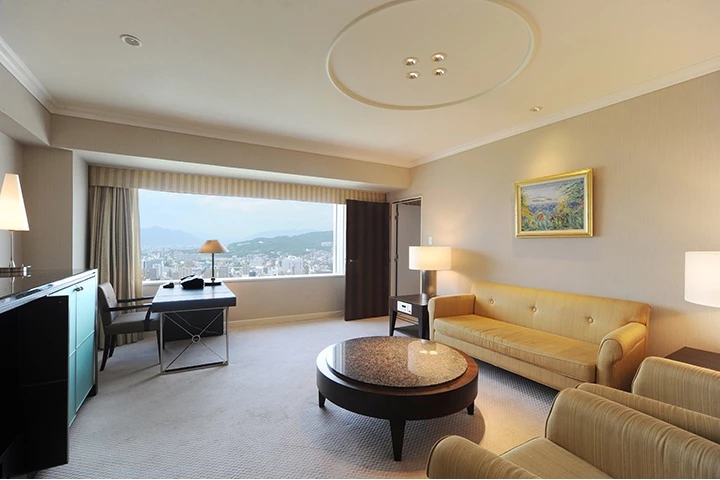
RIHGA Royal Hotel Hiroshima
RIHGA Royal Hotel Hiroshima is a landmark that catches your attention in Hiroshima city.
With Seto Inland Sea also visible at distance from the upper floors, it is an exquisite hotel with an elegant atmosphere.
Nestled in the heart of Hiroshima city, that boasts of two World Heritage Sites - Genbaku Dome (the Atomic Bomb Dome) and Itsukushima Shrine, and within walking distance from Hiroshima Peace Memorial Park and Hiroshima Castle, this hotel is at a perfect location for Hiroshima sightseeing.
RIHGA Royal Hotel Hiroshima
RIHGA Royal Hotel Hiroshima is a landmark that catches your attention in Hiroshima city.
With Seto Inland Sea also visible at distance from the upper floors, it is an exquisite hotel with an elegant atmosphere.
Nestled in the heart of Hiroshima city, that boasts of two World Heritage Sites - Genbaku Dome (the Atomic Bomb Dome) and Itsukushima Shrine, and within walking distance from Hiroshima Peace Memorial Park and Hiroshima Castle, this hotel is at a perfect location for Hiroshima sightseeing.

Sekitei Hotel Hiroshima
A beautiful Japanese Garden,
A Salon and Library like a hideaway overlooking the garden,
A comfortable Azumaya ...
Introducing the many fascinating spots at Sekitei.

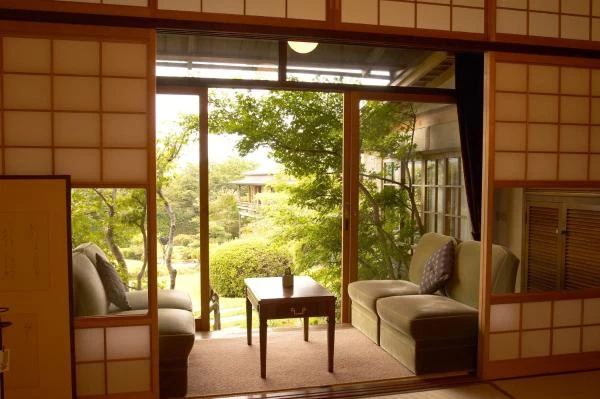

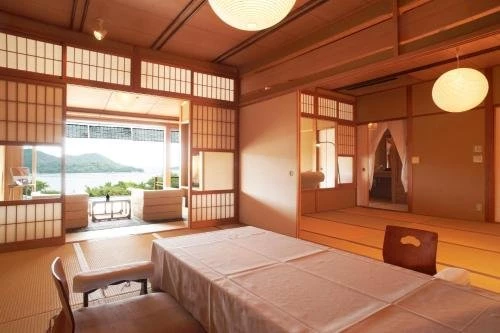
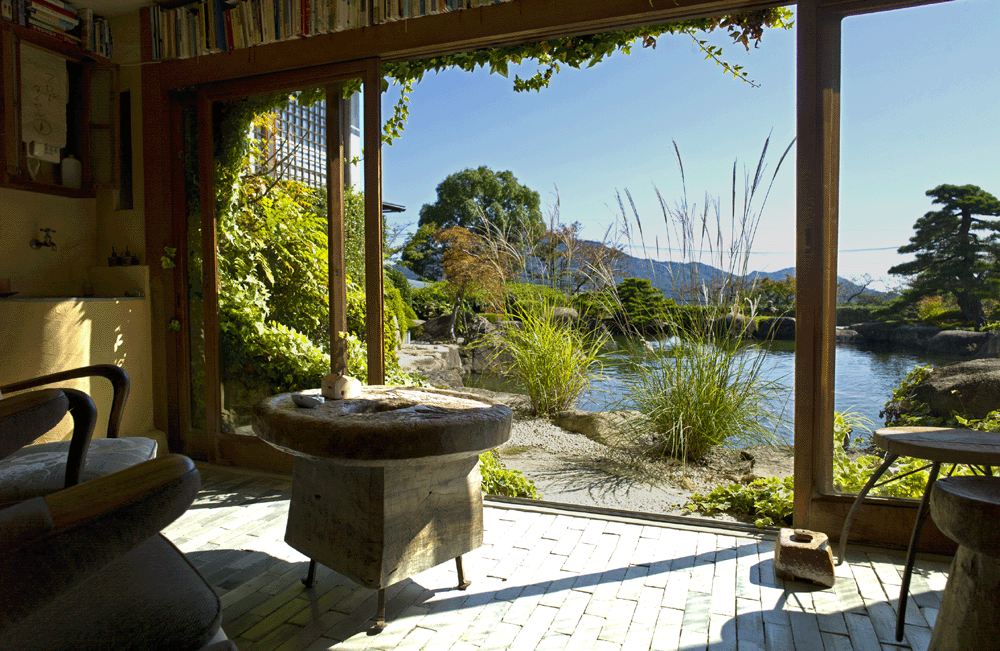
Sekitei Hotel Hiroshima
A beautiful Japanese Garden,
A Salon and Library like a hideaway overlooking the garden,
A comfortable Azumaya ...
Introducing the many fascinating spots at Sekitei.
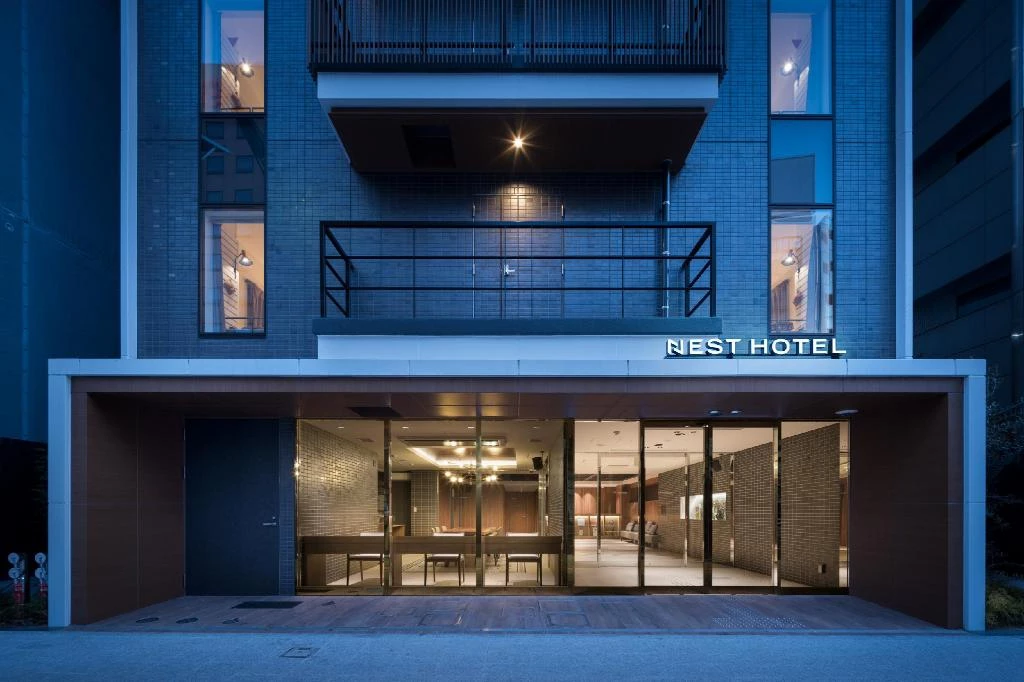
Nest Hotel Hiroshima Hatchobori
Like a “nest of comfort”, each room is thoughtfully designed to provide guests with a welcoming and relaxing experience.


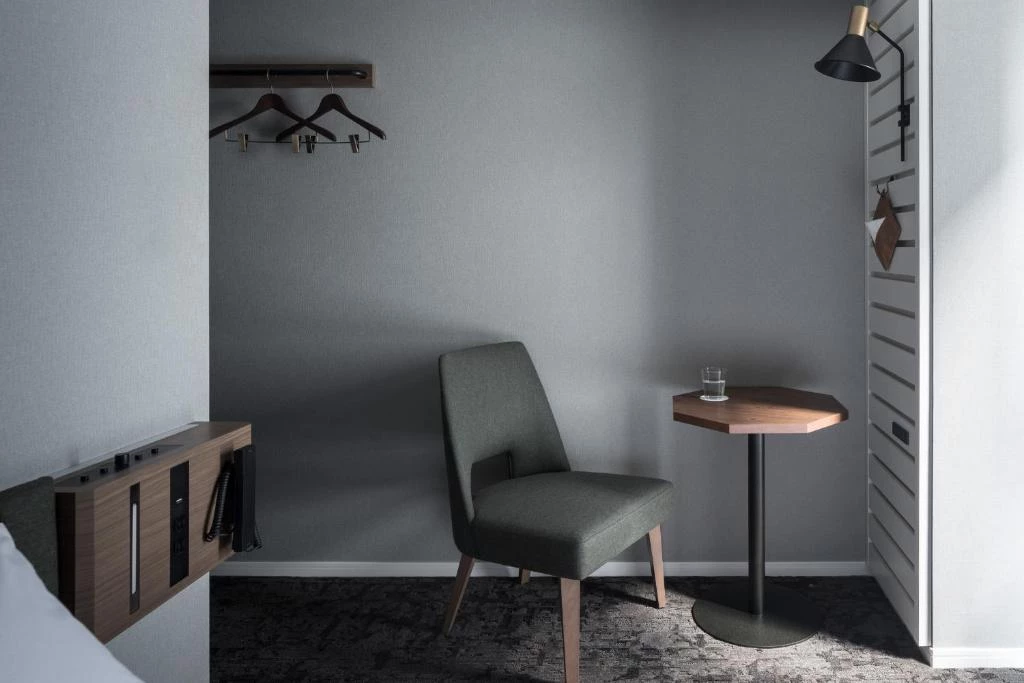


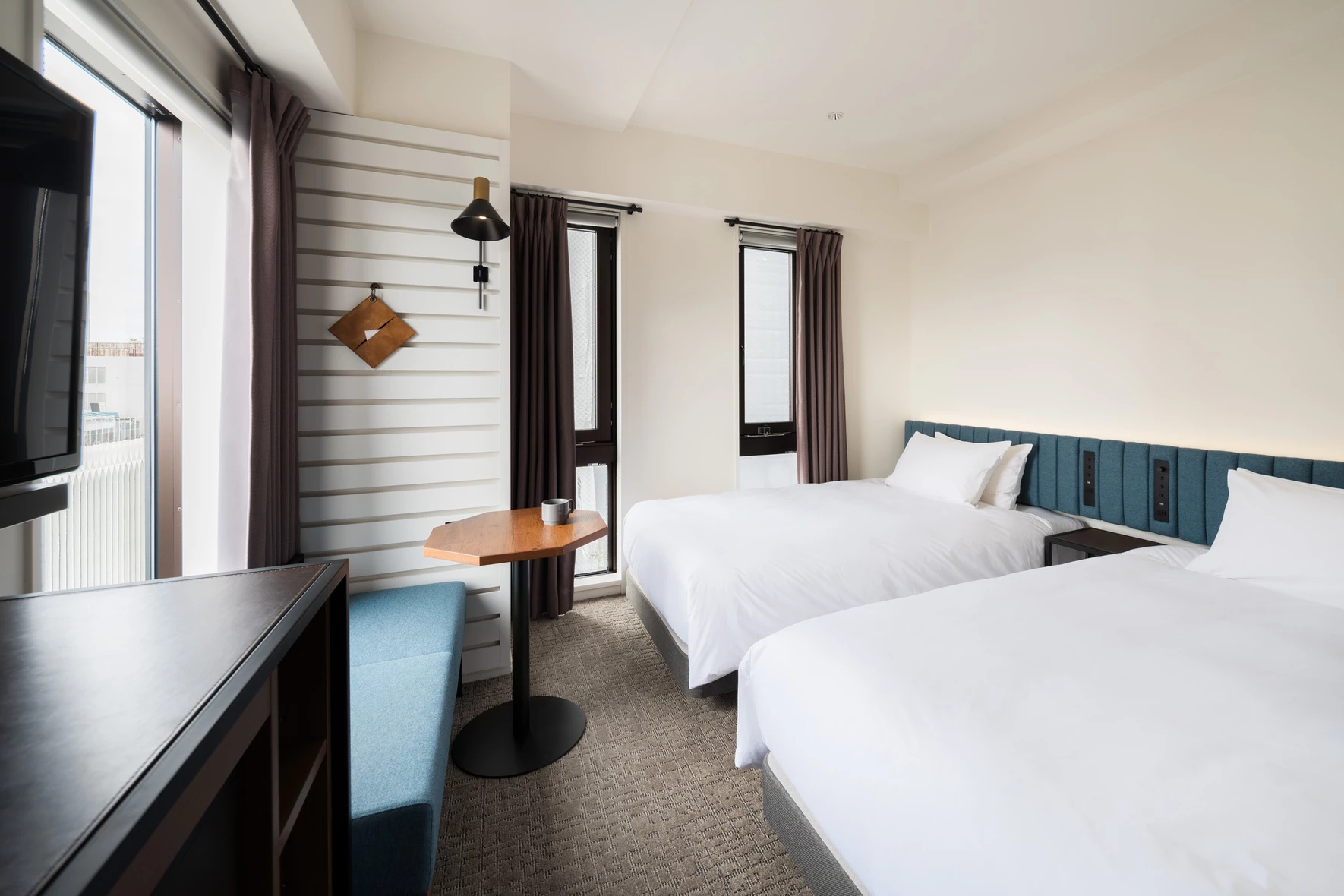

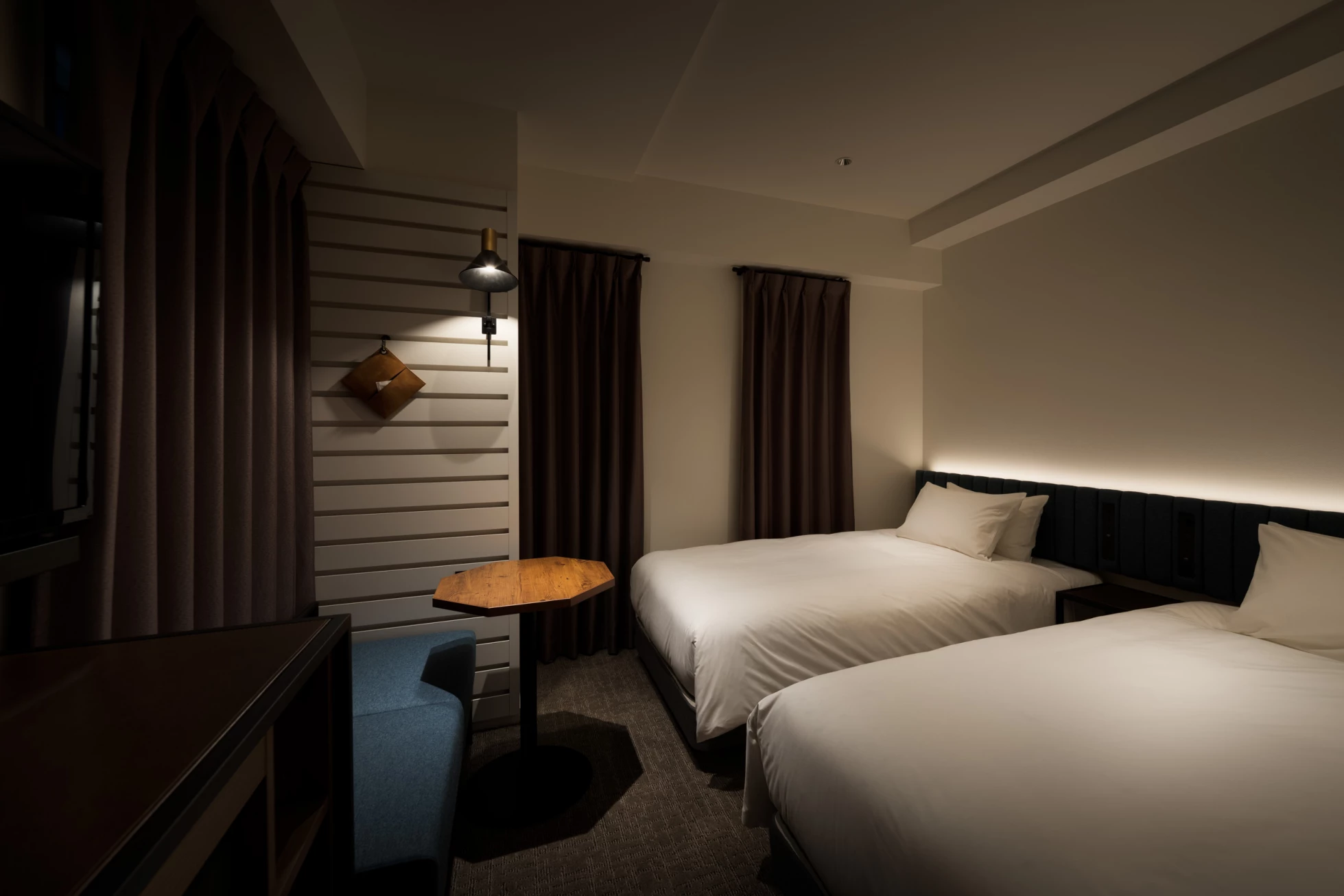
Nest Hotel Hiroshima Hatchobori
Like a “nest of comfort”, each room is thoughtfully designed to provide guests with a welcoming and relaxing experience.

The Knot hotel Hiroshima
The signage of THE KNOT HIROSHIMA uses many languages: Japanese, English, Hangul, Chinese, and more. While functioning as a universal sign, it also exists as art. This bringing together of a wide variety of languages clearly expresses the identity of THE KNOT brand.
The Knot hotel Hiroshima
The signage of THE KNOT HIROSHIMA uses many languages: Japanese, English, Hangul, Chinese, and more. While functioning as a universal sign, it also exists as art. This bringing together of a wide variety of languages clearly expresses the identity of THE KNOT brand.
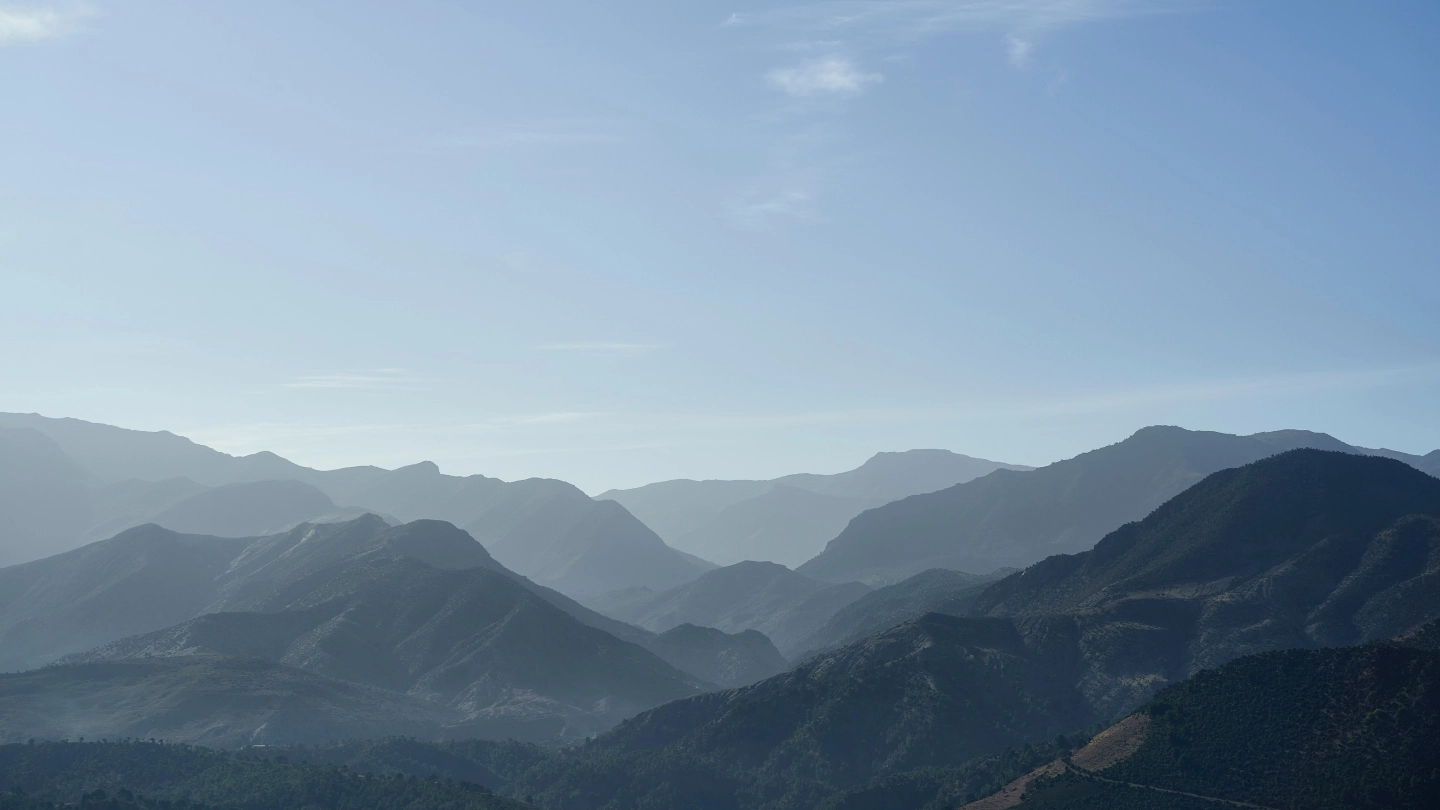
Why Adventure Asia
The company aims to serve soft/medium vacation options to the experienced adventure customer seeking uniquely styled expeditions, rather than traditional tourist-oriented itineraries that are prevalent.
Event Festival
Browse a month-by-month breakdown of suggested itineraries, seasonal activities, climate considerations and festivals.
Japan comes to life again after the lull of the New Year holiday. Winter grips the country in the mountains and in the north, ushering in ski season (take care when driving in snow country).
Shōgatsu (New Year)
Families come together to eat and drink to health and happiness. The holiday is officially 1 to 3 January, but many businesses and attractions close the whole first week, and transport is busy. Hatsu-mōde is the ritual first shrine visit of the new year.
Coming-of-Age Day
The second Monday of January is Seijin-no-hi (Coming-of-Age Day), the collective birthday for all who have turned 20 (the age of majority) in the past year. Young women don gorgeous kimonos for ceremonies at Shintō shrines.
Weather and Climate

The Japanese are proud of their four seasons (and an astonishing number of them are firmly convinced that the phenomenon is unique to Japan), but the tourist with a flexible travel schedule should aim for spring or autumn.
Spring: is one of the best times of year to be in Japan. The temperatures are warm but not hot, there’s not too much rain, and March-April brings the justly famous cherry blossoms (sakura) and is a time of revelry and festivals. For the southern half of the country, cherry blossom season typically starts towards the end of March and peaks in early April. The northern half has its season in mid to late April, up to Hokkaido which is in early May. Aside from the cherry blossoms, there is a lot more eye-candy afterwards, such as Japan’s azaleas, roses, and wisteria.
Summer: starts with a dreary rainy season (known as tsuyu or baiu) in June and turns into a steambath in July-August, with extreme humidity and the temperature heading as high as 35°C. Avoid, or head to northern Hokkaido or the mountains of Chubu and Tohoku to escape. The upside, though, is a slew of fireworks shows (花火大会 hanabi taikai) and festivals big and small.
Autumn, starting in September, is also an excellent time to be in Japan. Temperatures and humidity become more tolerable, fair days are common and fall colors can be just as impressive as cherry blossoms. However, in early autumn typhoons often hit the southern parts of Japan and bring everything to a standstill. The ideal time for autumn colors for the southern half of the country is typically in the second half of November. Mountainous areas and those farther north have their’s earlier.
Winter is a good time to go skiing or hot-spring hopping, but as some buildings lack central heating, it’s often miserably cold indoors. Heading south to Okinawa provides some relief. There is usually heavy snow in Hokkaido and northeast Japan due to the cold wind blasts from Siberia. Note that the Pacific coast of Honshu (where most major cities are located) has milder winters than the Sea of Japan coast: it may be snowing in Kyoto while it is cloudy or sprinkling rain in Osaka, an hour away. Late winter also has the plum blossoms which precede the cherry blossoms
Travel FAQs
Essential Information
Japan is an archipelago of more than 6000 islands located in the Pacific Ocean in Asia. The main islands are Hokkaido, Honshu, Kyushu and Shikoku. Lying on the Pacific Ring of Fire, Japan is prone to destructive earthquakes, tsunamis and volcanic activity. Japan has plenty of forested, mountainous terrain that is unsuitable for agriculture and development, so much of the population lives in the coastal cities. This has led Japan to become one of the most densely populated countries in the world and the majority of its inhabitants are used to living in very small spaces, with a heavy reliance on public transport. Although life is fast-paced and crowded in cities like Tokyo and Osaka, rural areas typically feature low-density, traditional housing and a slower pace of life. You can experience a greener side of Japan if you know where to look. Lush forest and moss-covered boulders abound on the remote island of Yakushima, for example. The island of Naoshima, on the other hand, has a tranquil coastline of shrub-covered cliffs. The sculpted gardens of Japan may not be wild, but they are undeniably beautiful and often demonstrate a greater harmony with the natural world than other examples from around the globe. Some of the best can be found in Kanazawa.
Getting There
By Air Narita Airport, near Tokyo, is the main point of entry for international travellers; Tokyo has another smaller international airport, Haneda, which is closer to the city centre. If you plan to skip Tokyo or zero in on a specific region, international airports in Kansai (for Kyoto and Osaka), Hokkaidō, Kyūshū and Naha (for Okinawa) might be more time and cost effective. Unless you’re flying from east or Southeast Asia, you’ll most likely fly first to Tokyo and transfer from there. Airports & Airlines Japan’s major international airports: Fukuoka International Airport At the northern end of Kyūshū, and the main arrival point for destinations in western Japan. The airport is conveniently located near the city and has direct flights to/from major cities in east and Southeast Asia. Haneda Airport Tokyo’s more convenient airport, about 30 minutes by train or monorail to the city centre. Haneda, also known as Tokyo International Airport, has direct flights to/from major cities in east and Southeast Asia, USA, Australia, Europe and the Middle East; domestic flights to/from Tokyo usually arrive/depart here. Kansai International Airport Serves the key Kansai cities of Kyoto, Osaka, Nara and Kōbe. Direct international flights to/from major cities in east and Southeast Asia, west coast USA and Australia. Naha Airport On Okinawa-hontō (the main island of Okinawa), with direct flights to/from major cities in east Asia (including Beijing, Hong Kong, Busan, Seoul, Singapore, Shanghai and Taipei). Narita International Airport About 75 minutes east of Tokyo by express train, Narita gets the bulk of international flights to Japan from around the world; most budget carriers flying to Tokyo arrive here. New Chitose Airport In central Hokkaidō, south of Sapporo, with direct flights to/from all major cities in east and Southeast Asia. Japan’s two main international carriers are Japan Airlines and All Nippon Airways; both also operate extensive domestic networks. Departure Tax Departure tax (¥1000) is included in the price of a ticket. By Land It is not possible to travel here by land. By Sea Ferries connect Japan to South Korea, China and Russia. Prices listed include fuel surcharges (which are subject to change).
Getting Around
The most popular way to see Japan: trains are fast, efficient, reliable and can get you just about anywhere; discount rail passes make train travel very affordable. Ferry Good for getting to far-flung islands or for fans of slow travel. Bus The cheapest way to make long-haul journeys and the only way to get to some mountain and rural destinations. Car Rental cars are widely available; roads are well-maintained and signposted in English. Especially recommended in Hokkaidō, Kyūshū and Okinawa. Drive on the left. Air An extensive network of domestic flights and an increased presence of budget carriers makes air travel a good option for long distances or time-pressed itineraries. Bicycle A few cities – including Tokyo, Osaka, Kōbe and Sapporo – have cycle-share schemes. They can be a little tricky to use, usually requiring advance registration online; follow the online directions. Many Japanese use bicycles to get around cities; by law bicycles should be ridden on the road but many people use the pavements. Cycle lanes are pretty much nonexistent. Drivers (and pedestrians) are generally courteous. In cities, bicycles should be parked at ports or designated bicycle parking areas. Many tourist areas have bicycles for hire. These are almost always heavy-framed, single-speed shopping bikes, though some places have electric bicycles; child-sized bicycles are rarely available. They may be free as part of a local tourism initiative; otherwise private businesses, usually in the vicinity of train stations, rent them out for about ¥1000 per day. Ask at the local tourist information centre. Many youth hostels also have bicycles to rent or borrow. Helmets are mandatory for children 12 years and under. Unless road touring, adults rarely wear them so rental shops don’t provide them (unless they offer children’s bicycles; then helmets for children will be included in the rental).
Visa and Permits
Visas are issued on arrival for most nationalities for stays of up to 90 days. Visitor Visas Citizens of 68 countries/regions, including Australia, Canada, Hong Kong, Korea, New Zealand, Singapore, USA, UK and almost all European nations, will be automatically issued a temporary visitor visa on arrival. Typically this visa is good for 90 days. For a complete list of visa-exempt countries and visa durations, consult www.mofa.go.jp/j_info/visit/visa/short/novisa.html#list. On entering Japan, all holders of foreign passports are photographed and fingerprinted. If asked, travellers arriving on a temporary visitor visa should be able to provide proof of onward travel or sufficient means to purchase an air or ferry ticket; in practice, this is rarely asked.
Local Customs
Modern Japan is home to both the ancient rituals and traditions influenced by Confucianism (introduced in AD285), Buddhism (introduced in AD552) and Shintoism (Japan’s ritualistic native religion), as well as advanced technologies and international trendsetting that emerged during the period of rapid free market development that occurred after the end of WWII. Young Japanese folks – who are a decidedly online, high-tech, fashion-forward crew – have adapted to a fast-paced world and generally work long hours, keep up with fashion trends and display a more ostentatious image in public than their elders. This is somewhat at odds with the Confucian-influenced, old school Japanese culture, which is based on modesty, respect and discipline. There is sometimes tension between Japanese people with more traditional values and this more flamboyant generation. However, traditions like tea ceremonies, bowing, kendo, geisha and sumo endure among all age groups. How to be a respectful traveller in Japan Etiquette is important to pretty much everyone in Japan, regardless of age or subculture. As a traveller, it can be a little daunting at first, but there are a couple of things to keep in mind (list). Shoes off – it’s customary to remove your shoes before entering homes or ryokans. Make sure you pack your best socks! Bow back – as a foreigner, no one expects you to bow back, but it is definitely a nice and well-received gesture. Let grandma go first – elderly people are very much respected in Japan, and it’s customary to allow them to go first when entering buildings or public transport. Save the snack – eating on the go is a big no-no in Japan. Aside from the immediate area around street food carts, you should avoid eating in public (non-restaurant) spaces.
Events and Festivals
Most Japanese are on holiday from 29 April to 5 May, when a series of national holidays coincide (called ‘Golden Week’). This is one of the busiest times for domestic travel, so be prepared for crowded transport and accommodation. Many businesses close for a week in mid-August, as Japanese return to their home towns for O-Bon festivities (or go on holiday instead). Restaurants and shops start shutting down from 29 December for the New Year holiday, which ends on 3 January (though many places close until 6 January). During this time, transport runs and accommodation remains open, but it’s pricey. January – Japan comes to life again after the lull of the New Year holiday. Winter grips the country in the mountains and in the north, ushering in ski season (take care when driving in snow country). Shōgatsu (New Year) Families come together to eat and drink to health and happiness. The holiday is officially 1 to 3 January, but many businesses and attractions close the whole first week, and transport is busy. Hatsu-mōde is the ritual first shrine visit of the new year. Coming-of-Age Day The second Monday of January is Seijin-no-hi (Coming-of-Age Day), the collective birthday for all who have turned 20 (the age of majority) in the past year. Young women don gorgeous kimonos for ceremonies at Shintō shrines. February – is the coldest month and the peak of Japan’s ski season. Setsubun Matsuri The first day of spring is 3 February in the traditional lunar calendar, a shift once believed to bode evil. As a precaution, people visit Buddhist temples, toss roasted beans and shout ‘Oni wa soto! Fuku wa uchi!’ (‘Devil out! Fortune in!’). Mantōrō Nara’s Kasuga Taisha celebrates Setsubun by lighting its 3000 stone and bronze lanterns during this festival which also happens over O-Bon. Yuki Matsuri Two million visitors head to Sapporo’s annual snow festival in early February. Highlights include the international snow sculpture contest, ice slides and mazes for kids, and plenty of drunken revelry. Book accommodation very early. Plum-Blossom Viewing Plum (ume) blossoms, which appear towards the end of the month, are the first sign that winter is ending. airaku-en in Mito is the most famous viewing spot but parks and gardens all over Japan have plum trees. March – Spring begins in fits and starts. The Japanese have a saying: sankan-shion – three days cold, four days warm. Hina Matsuri On and around 3 March (also known as Girls’ Day), public spaces and homes are decorated with o-hina-sama (princess) dolls in traditional royal dress. Anime Japan Anime Japan (www.anime-japan.jp), the world’s largest anime (Japanese animation) fair, takes place in Tokyo in late March. There are events and exhibitions for industry insiders and fans alike. April – Warmer weather and blooming cherry trees make this a fantastic month to be in Japan, though places like Kyoto can get very crowded. Cherry-Blossom Viewing When the cherry blossoms burst into bloom, the Japanese hold rollicking hanami (blossom viewing) parties. The blossoms are fickle and hard to time: on average, they hit their peak in Tokyo or Kyoto between 25 March and 7 April. Takayama Spring Matsuri On 14 and 15 April the mountain town of Takayama hosts the spring installment of its famous festival. This is the more elaborate of the two (the other is in October), with parades of spectacular floats lit with lanterns and a lion dance. Book accommodation well in advance. May – May is one of the best months to visit: it’s warm and sunny in most places and the fresh green in the mountains is beautiful. Be wary of the travel crush during the Golden Week holiday. Sanja Matsuri The grandest Tokyo festival of all, this three-day event, held over the third weekend of May, attracts around 1.5 million spectators to Asakusa. The highlight is the rowdy parade of mikoshi (portable shrines) carried by men and women in traditional dress. Roppongi Art Night Held in late May, this weekend-long (literally, venues stay open all night) arts event (www.roppongiartnight.com) sees large-scale installations and performances taking over the museums, galleries and streets of Roppongi. June – Early June is lovely, though by the end of the month tsuyu (the rainy season) sets in. As mountain snow melts, hiking season begins in the Japan Alps (though double-check for higher elevations). Hyakumangoku Matsuri In early June, Kanazawa’s biggest festival celebrates the city’s 16th-century glory days with period-costume parades, cultural performances and more. July – When the rainy season passes, suddenly it’s summer – the season for festivals and hanabi taikai (fireworks shows). It does get very hot and humid; head to Hokkaidō or the Japan Alps to escape the heat. Mt Fuji Climbing Season Mt Fuji officially opens to climbing on 1 July, and the months of July and August are ideal for climbing the peak. Gion Matsuri The most vaunted festival in Japan is held on 17 and 24 July in Kyoto, when huge, elaborate floats are pulled through the streets. Three evenings prior to the 17th, locals stroll through street markets dressed in beautiful yukata (light cotton kimonos). Accommodation is expensive and difficult to find. Tenjin Matsuri Held in Osaka on 24 and 25 July, this is one of the country’s biggest festivals. On the second day, processions of mikoshi (portable shrines) and people in traditional attire parade through the streets, ending up in hundreds of boats on the river. Fuji Rock Festival Japan’s biggest music festival takes place over one long (and often wildly muddy and fun) weekend at a mountain resort in Niigata in late July. Big-name acts on the large stages; indie bands on the smaller ones. Peiron Dragon-Boat Races In late July, dragon-boat races are held in the harbour of Nagasaki, a tradition introduced from China in the 17th century. August – Hot, humid weather and festivals continuing apace. School holidays mean beaches and cooler mountain areas get crowded. Many Japanese return to their home towns (or take a holiday) around O-Bon, so transit is hectic and shops may close. Summer Fireworks Festivals Towns across Japan hold spectacular summer fireworks festivals in late July and early August. Among the best: Sumida-gawa Fireworks festival (Tokyo, late July), Lake Biwa Fireworks festival (near Kyoto, early August) and Miyajima Water Fireworks Festival (near Hiroshima, mid-August). World Cosplay Summit Some 30 countries compete in early August (or late July) in Nagoya to see who has the best cosplayers (manga and anime fans who dress up as their fave characters). Sendai Tanabata Matsuri Sendai’s biggest event celebrates a Chinese legend about the stars Vega and Altair, stand-ins for two star-crossed lovers who meet once a year on 7 July (on the old lunar calendar, early August on the modern one). Downtown is decorated with coloured streamers. Nebuta Matsuri Over several days in early August, enormous, illuminated floats are paraded through the streets of Aomori in Northern Honshū accompanied by thousands of rowdy, chanting dancers. A famous festival; book accommodation early. Peace Memorial Ceremony On 6 August a memorial service is held in Hiroshima for victims of the WWII atomic bombing of the city. Thousands of paper lanterns are floated down the river. Matsumoto Bonbon Matsumoto’s biggest event takes place on the first Saturday in August, when hordes of people perform the city’s signature ‘bonbon’ dance through the streets. O-Bon (Festival of the Dead) Three days in mid-August are set aside to honour the dead, when their spirits are said to return to the earth. Graves are swept, offerings are made and lanterns are floated down rivers, lakes or the sea to help guide spirits on their journey. Awa-odori Matsuri The city of Tokushima, on the southern island of Shikoku, comes alive in mid-August for the nation’s largest and most famous bon dance. These dances, part of O-Bon celebrations, are performed to welcome the souls of the departed back to this world. Rōsoku Matsuri Kōya-san’s already deeply atmospheric Oku-no-in is lit with some 100,000 candles on 13 August for Rōsoku Matsuri during O-Bon. Daimon-ji Gozan Okuribi Huge fires in the shape of Chinese characters and other symbols are set alight in the hills around Kyoto during this festival, which forms part of the O-Bon rites. It’s one of Japan’s most impressive spectacles. Earth Celebration The island of Sado-ga-shima, off the coast of Northern Honshū, is the scene of this internationally famous festival of dance, art and music, held in late August. Highlights include taiko (drum) performances and workshops. September – Days are still warm, hot even, though less humid. Though the odd typhoon rolls through this time of year, this is generally a great time to travel in Japan. Jōzenji Street Jazz Festival Over the second weekend in September, this festival draws buskers from all over the country to play in Sendai’s streets and arcades. Kishiwada Danjiri Matsuri Osaka’s wildest festival, held over the third weekend in September, is a kind of running of the bulls except with danjiri (festival floats), many weighing more than 3000kg – take care and stand back. Most of the action takes place on the second day. Moon Viewing Full moons in September and October call for tsukimi, moon-viewing gatherings. People eat tsukimi dango – mochi (pounded rice) dumplings, round like the moon. October – Pleasantly warm days and cool evenings make this an excellent time to be in Japan. The autumn foliage peaks in the Japan Alps at this time. Matsue Suitōro Held on Saturdays, Sundays and holidays throughout October in the western Honshū city of Matsue, this festival of light and water takes place around the city’s scenic castle. Lanterns are floated in the moat and rival drumming groups compete on the banks. Asama Onsen Taimatsu Matsuri In early October, Asama Onsen in Matsumoto holds this spectacular fire festival, which sees groups of men, women and children parade burning bales of hay through narrow streets en route to an enormous bonfire. Yokohama Oktoberfest For two weeks in early October much beer drinking goes down during this event held in Yokohama’s historic harbour district. Kurama-no-hi Matsuri On 22 October, this festival sees loin-clothed men carrying huge flaming torches through the streets of the tiny hamlet of Kurama in the mountains north of Kyoto. Performing Arts Festivals Tokyo’s annual performing arts festival, Festival/Tokyo is held over a month from mid-October to mid-November at venues around the city. Kyoto’s edgier Kyoto Experiment (http://kyoto-ex.jp) is held around the same time. Halloween Japan has taken to Halloween in a big way. Tokyo’s Shibuya Crossingdraws thousands of costumed revellers on 31 October. Osaka’s Amerika-Mura> becomes one big street party. NovemberCrisp and cool days with snow starting to fall in the mountains. Autumn foliage peaks in and around Tokyo and Kyoto, which can draw crowds. Shichi-Go-San (7-5-3 Festival) This adorable festival in mid-November sees parents dress girls aged seven (shichi) and three (san) and boys aged five (go) in wee kimonos and head to Shintō shrines for blessings. December is cold across most of Japan. Year-end parties fill city bars and restaurants; commercial strips are decorated with seasonal illuminations. Many businesses shut down from 29 or 30 December to between 3 and 6 January. Luminarie Kōbe streets are lined with elaborate, illuminated arches every year for this event in early December, in memory of the victims of the 1995 Great Hanshin Earthquake. Toshikoshi Soba Eating buckwheat noodles on New Year’s Eve, a tradition called toshikoshi soba, is said to bring luck and longevity – the latter symbolised by the length of the noodles. Joya-no-kane Temple bells around Japan ring 108 times at midnight on 31 December, a purifying ritual.
WHEN IS THE BEST TIME TO TRAVEL?
The best time to visit Japan is probably spring, from April to early June; you can choose in particular the month of May, or follow the cherry blossoming (hanami). In Tokyo and Osaka, the full bloom occurs around March 30th, in Sendai around April 15th, in Sapporo around May 5th, in Okinawa even around February 1st. The flowering tends to last longer in the south than in the north (about two weeks in the south, one week in Hokkaido, and even one month in Okinawa), and the date can vary by a few days or one week, before or after, depending on the year. A good time to visit Japan is the month of May (which in the north of the country is also the driest month of the year), and also the first part of June, because it’s a comfortable climate almost everywhere (but in the Ryukyus it’s already hot), before the muggy heat and the rains that are typical of the Japanese summer. In May, highs are around 17 °C (63 °F) in Sapporo, 23 °C (73 °F) in Tokyo, and 27 °C (81 °F) in Okinawa. In April, the weather may still be cold on the island of Hokkaido. Winter is freezing cold in the north, while in the south it is mild, but in some areas it is also quite rainy. Summer is hot and humid in almost all of the country, with the risk of typhoons and torrential rains. Autumn is rainier than spring, and typhoons can still affect the country in the first part, at least until the middle of October. It should be remembered, however, that spring is a rainy season as well, especially in the south. In autumn, the forests and the trees around the temples take on beautiful colors: the period in which you can go in search of trees turning red (momijigari), especially maples, varies depending on area: in Hokkaido it goes from late September to late October (but already in mid-September in inland mountainous areas), in northern Honshu from October to early November, in Nikko and in the area of lake Chuzenji from early October to mid-November, in central and southern Japan and in Kyoto from mid-November to early December. If you want to go in autumn, you can choose the period mid-October to mid-November, by which time the risk of typhoons should be over, as well as the heat in the south, or you can choose the period of the fall foliage. In October, the temperatures are already cool in Sapporo, while they are pleasant in the rest of Japan, air humidity has decreased and the rains are less abundant. In November, it starts to be cold on the island of Hokkaido, but in the rest of the country the temperature is still mild. If you prefer to go in winter, for example at New Year, you can choose the most sheltered and sunny area of Honshu (Tokyo, Osaka, Kyoto), or the southernmost part of the other main islands (Kagoshima, Kochi) and the tropical area (Okinawa, Daito, Ogasawara). If you want to visit the main cities in summer, August is partly preferable to July, having more sunshine and less rainfall, but it is also true that it is hotter and there’s a greater risk of typhoons. Being rainy and not very sunny in summer, Japan is not the best country for swimming and sun bathing. Anyway, as we said before, in Hokkaido the sea is a bit cool even in this season, while it’s quite warm, with a temperature equal to or higher than 23 °C (73 °F), for most of the year in Okinawa, from July to October in Tokyo and Yokohama, and in August and September in Niigata. Since there’s a pause between the two rainy periods (May-June and August-September), in Okinawa the best month for a beach holiday is July, though afternoon thunderstorms are still possible, in addition to the passage of tropical storms and typhoons over the island.
WHAT MONEY SHOULD I TAKE?
The Japanese currency is the yen (¥; en in Japanese). Notes are available in denominations of ¥1000, ¥2000, ¥5000 and ¥10,000, while coins come in values of ¥1, ¥5, ¥10, ¥50, ¥100 and ¥500. Though credit and debit cards are becoming more widely accepted, Japan remains very much a cash society. The most useful cards to carry are Visa and American Express, followed closely by MasterCard, then Diners Club; you should be able to use these in hotels, restaurants, shops and travel agencies accustomed to serving foreigners. However, many retailers only accept locally issued cards.
DO and DON'T
Things to do Learn a little of the language, and try to use it. They will be complimentary if you try, and there is no reason to be embarrassed. They realize that Japanese is very difficult for foreigners and are tolerant about your mistakes; on the contrary, they will like you more for trying. Bowing: men bow with their hands to their sides. Women bow with their hands together in front. Women’s hands look like they are settled in their lap when bowing (not in a prayer position such as the Waiiin Thailand). The exact degree of the bow depends on your position in society relative to the receiver of the bow and on the occasion: the largely unwritten rules are complex, but for foreigners, a “token bow” or nod is fine. Many Japanese will, in fact, gladly offer a handshake instead. When you are handing something to someone, especially a business card, it is considered polite to present it holding it with both hands. Note that this is true of credit cards and money, most businesses have a tray for you to put payment into rather than handing it directly to the cashier. When you are drinking sake or beer in a group, it is considered polite not to fill your own glass but to allow someone else to do it. Typically, glasses are refilled well before they are empty. To be especially polite, hold up your own glass with both hands while one of your companions fills it. It is rude to eat or drink outside or while walking down the sidewalk. Gift-giving is very common in Japan. You, as a guest, may find yourself inundated with gifts and dinners. Foreign guests are, of course, outside of this sometimes burdensome system of give-and-take (kashi-kari), but it would be a nice gesture to offer a gift or souvenir (omiyage), including one unique to or representative of your country. A gift that is “consumable” is advisable due to the smaller size of Japanese homes. Items such as soap, candies, alcohol, stationery will be well-received as the recipient will not be expected to have it on hand on subsequent visits. “Re-gifting” is a common and accepted practice, even for items such as fruit. If opening a wrapped present do not tear or damage the paper. Expressing gratitude is slightly different from obligatory gift-giving. Even if you brought a gift for your Japanese host, once you return, it is a sign of good etiquette to send a handwritten thank-you card: it will be much appreciated. Japanese guests always exchange photos that they have taken with their hosts so you should expect to receive some snapshots and should prepare to send yours (of you and your hosts together) back to them. Depending on their age and the nature of your relationship (business or personal), an online exchange may suffice. The elderly are given special respect in Japanese society, and they are used to the privileges that come with it. Note that certain seats (“silver seats”) on many trains are set aside for the disabled and the elderly. If visiting a Shinto shrineor a Buddhist temple, follow the appropriate cleansing procedure at the chōzuya (手水舎) before you enter. After filling the dippers with water, rinse your left hand, then your right hand. Thereafter, cup your left hand and fill it with water, using it to rinse your mouth. Do not touch the dipper directly with your mouth. Finally, rinse your left hand again with the water remaining in the dipper. There are not many trash cansin public; you may have to carry around your trash for a while before finding one. When you do, you’ll often see 4 to 6 of them together; Japan is very conscious of recycling. The best places to find bins are transit stations and convenience stores. Most disposable containers are labelled with a recycling symbol in Japanese indicating what type of material it is. Some types of recycling bins you’ll often see are: Paper (紙kami) PET/Plastic (ペットpetto or プラ pura) Bottles and cans (ビン・カンbin, kan) Burnable trash (もえるゴミmoeru gomi) Non-burnable trash (もえないゴミmoenai gomi) Things to avoid Japanese people understand that visitors may not be aware of the intricacies of Japanese etiquette and tend to be tolerant of blunders in this regard by foreigners. There are a few serious etiquette breaches, however, that will meet with universal disapproval, even with foreigners, and they should be avoided at all costs: Never walk on a tatami mat wearing shoes or even slippers. Japanese dwellings and Japanese style hotel rooms will have a genkan, a transitional area. Take your shoes off while standing in the genkan, stepping back onto the boarded area of the floor. Never leave your chopsticks standing upright in a bowl of rice as that is how rice is offered to the dead. Never enter a bathtub without washing up first. Avoid physical contact in public. You will not see Japanese people kissing or hugging. Holding hands is as far as you’ll see. Other things Shoes (and feet in general) are considered very dirty by the Japanese. Avoid pointing your soles at anybody (such as when sitting on the train) and try to restrain children from standing up on seats. Brushing your feet against somebody’s clothing, even by accident, is very rude. The Japanese consider back slaps rude, especially if they’re coming from someone they just met. As it is not common practice in Japan, hugging should also be avoided. For Japanese it is typically very awkward and uncomfortable. Point at people with an open hand, not a finger (but pointing this way at things is fine), and tell people to come by waving your hand facing down, not up. Avoid shouting or talking loudly in public. Talking on a mobile phone on a train is considered rude, and many trains have signs advising you not to use them. (Sending text messages, however, is considered de rigueur.) Blowing your nose in public is considered rude, much like flatulence. It is fine to walk around sniffling until you can find a private place to blow your nose. World War II is a touchy and complicated topic. If it comes up, be considerate. If it doesn’t, even better. Like in India, China and Taiwan, swastikas are Buddhist symbols representing good luck and do not represent Nazism or anti-Semitism. As such, Western visitors should not feel offended seeing a swastika in Buddhist temples or in their host’s home.
What's your refund policy?
Below is our cancellation and refund policy: 🔸 60 days prior to arrival date: No cancellation charge for the land cost. We guarantee 100% of the land cost back. The airline cancellation fees are applied according to the airline's policy. 🔸 59 - 30 days prior to arrival date: 5% cancellation charge + airfare cancellation fees 🔸 29 - 15 days prior to arrival date: 10% + airfare cancellation fees. 🔸 14 - 8 days prior to arrival date: 40 + airfare cancellation fees. 🔸 7 days prior to arrival date: 100% 🔸 No show: 100% Please note that the domestic flight tickets in the package are non-refundable
Top 10 tips & hacks when travel to Japan
⛩️🌸 Hack #1: Savoring Simplicity at 7-Eleven Within the humble walls of 7-Eleven, find culinary haikus in onigiri and teriyaki. Just 200 yen unlocks a taste of Japan’s everyday song. ⛩️🌸 Hack #2: The Essential Companion of Pocket Wi-Fi For a mere $5 a day, a pocket Wi-Fi becomes your tether to the infinite. Navigate and connect with the silent assurance that you are never alone, never lost. ⛩️🌸 Hack #3: The JR Pass - Your Passport to Discovery The JR Pass, now $340.65 for seven days, remains a key to the kingdom of movement. Let the Shinkansen carry you swiftly to the heart of your next adventure. ⛩️🌸 Hack #4: Maps and Schedules - Your Pre-Travel Canvases Before departure, gather maps and schedules like precious scrolls. They are your guides to glide through Japan with the grace of a calligrapher’s brush. ⛩️🌸 Hack #5: Citymapper - Your Digital Compass Citymapper, a free ally, interprets the complex dance of Tokyo’s transit. It whispers the quickest steps to your urban oasis. ⛩️🌸 Hack #6: Travel in the Whisper of Seasons Choose the reflective quiet of winter for your pilgrimage. January through March, a time of fewer travelers and more gentle prices, welcomes you with open arms. ⛩️🌸 Hack #7: Tickets and Reservations - Your Invitation to Wonder Reserve your place at Japan’s tables of joy—be it the Ghibli Museum or Tokyo Disney. Each ticket is a promise, a future memory that awaits your arrival. ⛩️🌸 Hack #8: Japan Connected-free Wi-Fi - Your Invisible Network The Japan Connected-free Wi-Fi app offers you the key to over 170,000 lifelines. Connect with ease, and weave yourself into the digital heartbeat of Japan. ⛩️🌸 Hack #9: Cash - The Whisper of Exchange In Japan, cash is not just currency; it’s a handshake, a shared smile, a bridge to heartfelt exchanges in places where modernity still bows to tradition. ⛩️🌸 Hack #10: Choose Taxis for the Road Less Traveled Opt for taxis, your chariots to authentic encounters, often more economical than their Uber counterparts, and always rich with local color and candor.




